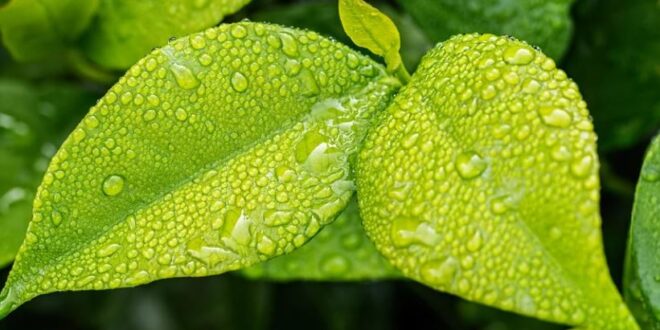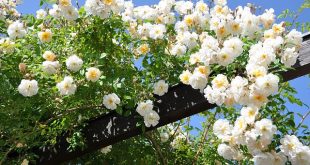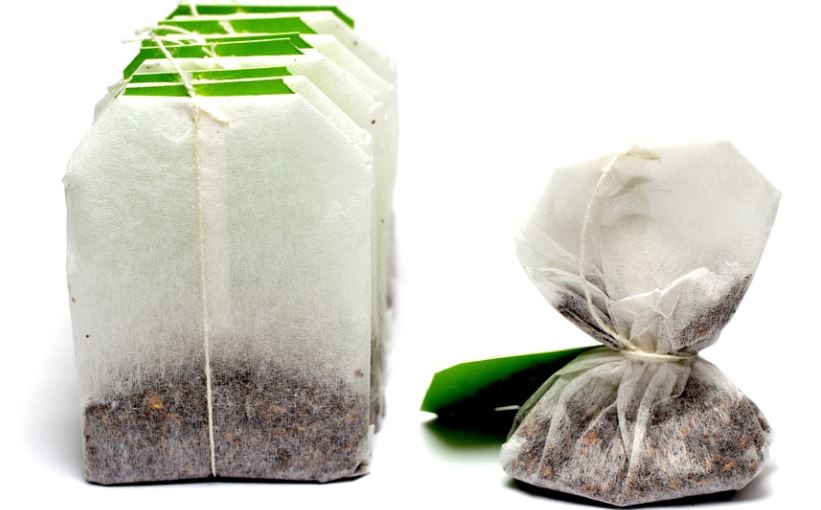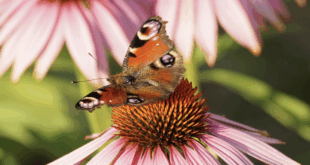Gardening is a hobby that many of us enjoy. We can get outside and appreciate the wonders of nature as we look to create stunning displays of flowers, enhance our garden design, or try our hand at growing some fruit and veg. Not only does gardening help improve our mental health and boost our moods, but we can also give something back to nature and the environment. Gardening is something that has been enjoyed throughout the generations. A lot of the gardening advice we now know and make use of in our gardens has also been passed down. However, some of these gardening tips may not be what they seem. We examine 10 gardening myths to see if they really do work of if they really are just a myth.
10 gardening myths
1. Watering plants during midday causes sunburn
A common gardening belief is that watering your flowers during midday will inevitably cause sunburn. The sunlight focused through the water droplets is believed to burn and mark the leaves, leaving horrible and unsightly patches, or even holes.
There may be several good reasons not to water plants at midday, e.g. water evaporates much quicker on hot, sunny days, so a morning or evening feed is more efficient. Sunburn, however, is not one of them. The idea most likely originates from the same idea as using a magnifying glass to creates burns from direct sunlight. The belief being that water droplets on leaves will act like a magnifying glass to damage the leaf tissue. Research has found that the water is far too close to the leaves to cause any damage before evaporating.
2. Grass trimmings left on the lawn after cutting causes thatch
It seems inevitable that when we cut the grass, some grass trimmings will get left behind on the lawn. We then get the rake out to get the trimmings up believing it will cause thatch in our lawns – a dead layer of turf that is formed naturally as part of a lawn’s lifecycle.
If you like your lawn looking green or feeling firm, it can be very unsightly and irritating. However, the trimmings that are left on your lawn after mowing is not the cause. In fact, the trimmings can be beneficial. Rich in nitrogen, the clippings quickly break down and help to fertilise the lawn.
Providing your grass is healthy and growing properly, new roots, stems and leaves grow as old ones die. Thatch is formed when new grass grows at a faster rate than it takes for the old grass to decompose, usually because of improper fertilisation. A thin layer can be good for the lawn, but thick layers are bad as this creates a barrier for moisture, nutrients, and air thereby preventing growth.
If you want to remove thatch from your lawn, the Royal Horticultural Society recommends scarifying in the autumn.
3. Using sand to lighten clay soil
Clay soil can be a gardener’s nightmare for growing flowers and vegetables. The dense clay makes it very difficult for flower and vegetable roots to grow and are usually not strong enough to push their way through the dense soil. As well as being heavy to dig and slow to warm in the spring, clay soil is prone to becoming waterlogged, which can slow plant growth or even rot the roots.
If you have clay soil in your garden, you may have heard about adding sand to lighten the soil. Particularly if you want to take advantage of the nutrients that clay soil holds so well. While sandy soils do drain well, adding sand to clay soil can have adverse effects.
Adding sand to clay soil can make it into a hard mortarlike substance that drains water away too quickly. The Royal Horticultural Society states that to dilute a portion of clay soil will require very large amounts of sand to make any difference to the soil density. Adding plenty of organic matter, including home-made compost and manure, can help to improve soil structure. Growing vegetables in raised beds can also improve drainage.
4. Trees should be staked when planted
Trees are not only extremely beneficial to the environment, but they also look great in the garden and provide some extra added height to your plant displays. You may be tempted to plant trees in the garden, such as blossom trees to provide an added decorative touch, or fruit trees to provide some nice edible fruit.
Another gardening myth you may have come across is that young trees should be staked when planting. Staking trees may be done for several reasons, including to ensure vertical growth or to protect the tree while the roots become established in the ground.
Staking can do more harm than good and can hinder the trees proper development. Staking tress could result in them becoming dependent on the staking pole. Trees that are not supported by stakes can grow more supportive roots, thicker trunks and are less prone to breaking. The only time trees need to be staked is in windy areas or sloped plots.
5. Fixing root bound plants before planting
Plants bought from garden centres and nurseries are typically root bound, sometimes referred to as pot bound. Essentially, plants that are kept in pots become root bound due to space constrain that does not allow the roots to grow outwards. Instead, once the roots reach the edge of the pot, they begin to grow around the root ball in the small, confined space of the pot. Eventually, nearly the entire surface of the root ball becomes covered. Leaving certain plants like this will only cause the root layer to get thicker.
While you can leave the roots bound and plant them in the hope it will fix itself, it does not always work. Teasing by gently separating some of the roots from the root bound can help to free some roots to allow them to be planted. If the roots are heavily bound, this may not be so easy to do.
For trees and shrubs, box cutting and removing the bottom roots can fix this problem. Finding the root flare and planting it at or above the soil level also helps. Alternatively, for annuals and perennials, try lightly shaking off any loose potting soils before planting. Do not make any cuts to the roots.
6. Putting gravel into the bottom of containers is good for drainage
Another gardening myth you may have come across is placing stones, or sand, at the bottom of containers and planters to improve drainage and irrigation. You may have also heard that it prevents barrels and planters from becoming waterlogged.
However, putting gravel or stones in the bottom of containers is another myth that is not true. You do not need to put anything at the bottom of planters or containers and doing so can have a negative effect. Water will stay above the stones in the soil and there is less space for plants and roots to grow. A more effective solution is mixing sand and stones into the soil itself or providing a drainage hole at the bottom of any containers to make sure excess water can escape.
7. Planting marigolds will help to deter bad bugs
Marigolds emit a strong and overpowering musky odour, like the smell of damp straw or hay. The strong smell given off by Marigolds have led some to believe that it can be used as a deterrent for pests that are likely to eat at your plants.
There is some truth in this myth. Marigolds can deter certain bugs, but not all. Planting them alongside your vegetables will deter greenfly and blackly, alongside other bugs such as cabbage worms. Marigolds are also proven to attract beneficial flies, such as aphids, that will feed on the less desirable bugs.
Unfortunately, there is a catch. Currently, there is little evidence to suggest the aroma from marigolds does repel bugs. Plus, in order to create a strong enough repellent for these bad bugs would require massive amounts of marigolds.
The jury’s out on this one…
8. Plants need watering daily
I am sure many of us like to keep our plants and flowers healthy by watering them frequently. Some may even stretch to watering plants daily. Some container plants, such as Dwarf Alberta Spruce and Coleus, may need daily watering. Most plants in the main bedding landscape do not.
Watering only a couple of times a week and irrigating deeply is much more beneficial for your plants. Also, shallow watering is more likely to make roots stay close to the surface. Roots should grow deep to allow them to be more self-sufficient during dry periods. Plants do not necessarily need one inch of water a week either, as this will depend on the type of plant and age. The younger the plant, the more water required for growth.
9. Tea leaves can make a good fertiliser
Tea leaves are full of different minerals, including magnesium, calcium, and potassium. With so many good nutrients found in tea leaves, some have taken to either mixing tea leaves into their soil or using it in compost as a fertiliser.
However, most of the nutrients in the tea leaves are not easily accessible to plants. Additionally, some of the nutrients, such a fluorine and aluminium also found in tea leaves, can hinder the growth of plants. On the plus side, research has found there is hardly any distinction between compost tea in liquid form and water.
10. Drought-tolerant plants do not require watering
Drought-tolerant plants such as hardy Geraniums, Agapanthus, and Sedums are plants that do not require much watering. As a result, some gardeners have taken this literally and believe drought-tolerant plants do not require watering at all.
Drought-tolerant plants do require water just like any other plants. The only difference with drought-tolerant plants is they do not require frequent watering. The only except to the rule is when they are first planted. As the roots are establishing into the ground, drought-tolerant plants will need regular watering until they are bedded in.
Once the roots have dispersed, watering should only be done once the roots have dried out. Frequently watering drought-tolerant plants can cause them to rot if the soil is constantly moist. As a result, these plants should not be mixed in with plants that require regular water to keep them healthy.
By exploring some of the popular gardening myths, we have discovered whether they hold true or not. While some myths were found to be wrong, others were just misconceptions. Nevertheless, we hope exploring these 10 gardening myths may have helped you to learn something new. Happy gardening!
 Gardeners Club The Gardeners Club is a free to join online club for everyone with an interest in gardening and gardens.
Gardeners Club The Gardeners Club is a free to join online club for everyone with an interest in gardening and gardens.










